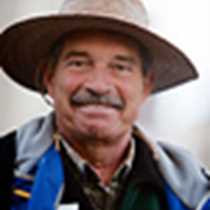Ideal Cove and Petersburg Bog Walk, Southeast Alaska
Four orchid species for one day, in Alaska? You bet! We saw the coralroot, the rein-orchid, the bog orchid and the heart-leaved twayblade. Some flowers were in the bog, some in the typical western-hemlock/Sitka spruce forest. And oh, so many other interesting plants. As well as a timid porcupine! Today’s visit to Ideal Cove’s trail was very biodiverse, and the afternoon’s visit to the Petersburg Bog Walk was even more interesting. This is a bog or muskeg, where the water that collects from runoff and from the rain forms small ponds, populated by those predaceous water striders and spiders, as well as with insect-eating plants, such as the two species of sundews present here. The trees we can see are all stunted due to the acid water. And all the smaller plants are adapted to living in this harsh environment also. Here we see bog and dwarf blueberries, bog cranberries, Labrador tea, and buckbean.
En route back to our Zodiacs we tasted different berries, such as salmonberries, five-leaved brambles and two species of blueberries! And then, later in the afternoon, we enjoyed watching some of the festivities of the town for today, such as tricycle races and log spinning contests. With the loser, of course, falling into the cold water. Some younger members of the ship were interested in playing a solo on the “slimebone,” a piece of the giant bull-kelp. Recap for the day was at 1900 hs, where we constructed a tree with all its parts, heard about saprophytic, epiphytic and parasitic plants, as well as about the huge skunk cabbage plant, that uses heat to melt its flower through the ice and snow, in spring.
Four orchid species for one day, in Alaska? You bet! We saw the coralroot, the rein-orchid, the bog orchid and the heart-leaved twayblade. Some flowers were in the bog, some in the typical western-hemlock/Sitka spruce forest. And oh, so many other interesting plants. As well as a timid porcupine! Today’s visit to Ideal Cove’s trail was very biodiverse, and the afternoon’s visit to the Petersburg Bog Walk was even more interesting. This is a bog or muskeg, where the water that collects from runoff and from the rain forms small ponds, populated by those predaceous water striders and spiders, as well as with insect-eating plants, such as the two species of sundews present here. The trees we can see are all stunted due to the acid water. And all the smaller plants are adapted to living in this harsh environment also. Here we see bog and dwarf blueberries, bog cranberries, Labrador tea, and buckbean.
En route back to our Zodiacs we tasted different berries, such as salmonberries, five-leaved brambles and two species of blueberries! And then, later in the afternoon, we enjoyed watching some of the festivities of the town for today, such as tricycle races and log spinning contests. With the loser, of course, falling into the cold water. Some younger members of the ship were interested in playing a solo on the “slimebone,” a piece of the giant bull-kelp. Recap for the day was at 1900 hs, where we constructed a tree with all its parts, heard about saprophytic, epiphytic and parasitic plants, as well as about the huge skunk cabbage plant, that uses heat to melt its flower through the ice and snow, in spring.




